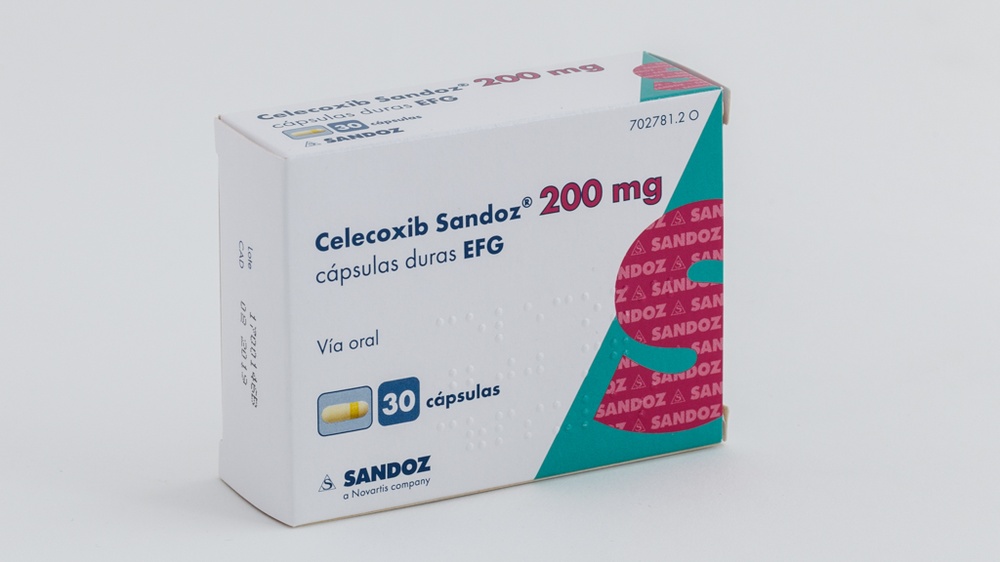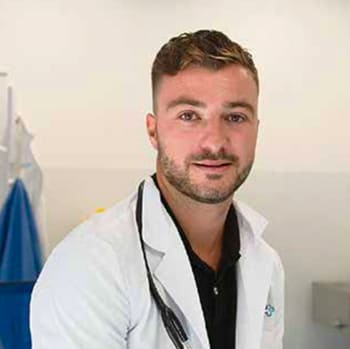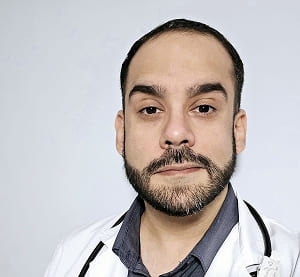

CELECOXIB SANDOZ 200 mg CÁPSULAS DURAS

Pergunte a um médico sobre a prescrição de CELECOXIB SANDOZ 200 mg CÁPSULAS DURAS

Como usar CELECOXIB SANDOZ 200 mg CÁPSULAS DURAS
Introdução
Prospecto:informação para o utilizador
Celecoxib Sandoz200 mg cápsulas duras EFG
Leia todo o prospecto detenidamente antes de começar a tomar este medicamento porque contém informações importantes para si.
- Conserva este prospecto pois pode ter que voltar a lê-lo.
- Se tiver alguma dúvida, consulte o seu médico ou farmacêutico.
- Este medicamento foi-lhe prescrito apenas para si, e não deve dá-lo a outras pessoas, mesmo que tenham os mesmos sintomas que si, pois pode prejudicá-las.
- Se experimentar efeitos adversos, consulte o seu médico ou farmacêutico, mesmo que se trate de efeitos adversos que não aparecem neste prospecto. Ver secção 4.
Conteúdo do prospecto:
- O que é Celecoxib Sandoz e para que é utilizado
- O que precisa saber antes de começar a tomar Celecoxib Sandoz
- Como tomar Celecoxib Sandoz
- Posíveis efeitos adversos
- Conservação de Celecoxib Sandoz
Conteúdo do envase e informação adicional
1. O que é Celecoxib Sandoz e para que é utilizado
Celecoxib Sandoz está indicado em adultos para aliviar os sinais e sintomas da artrite reumatoide, da artrose, e da espondilite anquilosante.
Celecoxib Sandoz contém o princípio ativo celecoxib. Celecoxib pertence a uma classe de medicamentos denominados anti-inflamatórios não esteroideos (AINEs), e concretamente ao subgrupo conhecido como inibidores seletivos da ciclooxigenase-2 (COX-2). O seu corpo produz prostaglandinas que podem produzir dor e inflamação. Em afecções como a artrite reumatoide ou a artrose o seu corpo as produz em maior quantidade. Celecoxib Sandoz actua reduzindo a produção de prostaglandinas, diminuindo assim a dor e a inflamação.
O medicamento começará a fazer efeito algumas horas após ter tomado a primeira dose, mas pode que não experimente um efeito completo até passados vários dias.
2. O que precisa saber antes de começar a tomar Celecoxib Sandoz
O seu médico prescreveu-lhe celecoxib. A seguinte informação ajudá-lo-á a obter melhores resultados com este medicamento. Se tiver alguma outra dúvida, por favor pergunte ao seu médico ou farmacêutico.
Não tome Celecoxib Sandoz
Informa ao seu médico se alguma das seguintes circunstâncias o afecta a si, pois doentes com estas afecções não devem tomar celecoxib:
- se é alérgico a celecoxib ou a algum dos outros componentes deste medicamento (incluídos na ver secção 6),
- se teve alguma reação alérgicaa algum medicamento do grupo chamado “sulfonamidas” (p. ex.: alguns são antibióticos utilizados para tratar infecções),
- se tem actualmenteuma úlceraou hemorragiade estômago ou intestino,
- se sofreu previamente algum dos sintomas seguintes como consequência de ter tomado ácido acetilsalicílico ou qualquer outro fármaco anti-inflamatório: asma, pólipos nasais, congestão nasal grave, ou sintomas alérgicoscomo erupção cutânea com picazón, inchação da face, lábios, língua ou garganta, dificuldade para respirar ou sibilância,
- se está grávida. Se puder ficar grávida durante o tratamento, deve comentar a utilização de métodos anticonceptivos com o seu médico,
- se está a amamentar o seu filho,
- se tem uma doença grave de fígado,
- se tem uma doença grave de rim,
- se tem doença inflamatória intestinalcomo colite ulcerosaoudoença de Crohn,
- se tem insuficiência cardíaca, doença isquémica cardíaca diagnosticada, ou doença cerebrovascular, p. ex. foi diagnosticado um infarto, acidente vascular cerebral, ou ataque isquémico transitório (diminuição temporária do fluxo de sangue para o cérebro; também conhecido como “mini-acidente vascular cerebral”), angina de peito, ou obstrução dos vasos sanguíneos para o coração ou para o cérebro,
- se tem ou teve problemas de circulação sanguínea(doença arterial periférica) ou se foi operadodas artérias das suas pernas.
Advertências e precauções
Consulte o seu médico ou farmacêutico antes de começar a tomar Celecoxib Sandoz se:
- teve previamenteuma úlcera ou hemorragia no estômago ou intestino (Não tome CelecoxibSandozse actualmentetem uma úlcera ou hemorragia no estômago ou intestino),
- fuma, tem diabetes, tensão arterial alta ou colesterol elevado,
- tem problemas de coração, fígado ou rim, o seu médico pode querer supervisioná-lo regularmente,
- tem retenção de líquidos(como pés ou tornozelos inchados),
- está desidratado, por exemplo, como consequência de uma doença com vómitos, diarreia ou por uso de diuréticos (usados para tratar excesso de líquido no corpo),
- sofreu uma reação alérgicagrave ou uma reação grave da pele a qualquer medicamento,
- se sente doente devido a uma infecçãoou acredita que tem uma infecção, pois ao tomar celecoxib pode mascarar a febre ou outros sinais de infecção e inflamação,
- tem mais de 65 anoso seu médico quererá supervisioná-lo regularmente.
Assim como ocorre com outros AINEs(p. ex.: ibuprofeno ou diclofenaco), este medicamento pode aumentar a sua pressão arterial, por isso o seu médico poderá realizar um controlo periódico da mesma.
Foram comunicados alguns casos de reações hepáticas gravescom celecoxib que incluíram inflamação hepática grave, dano hepático, insuficiência hepática (algumas com desfecho mortal ou que requereram transplante hepático). Da maioria dos casos em que secomunicouquando se iniciou o evento, a maioria das reações hepáticas graves ocorreu no primeiro mês de tratamento.
Celecoxib pode dificultar a gravidez. Deve informar o seu médico se planeia engravidar ou se tem problemas para engravidar (ver secção "Gravidez, lactação e fertilidade").
Crianças e adolescentes
Celecoxib Sandoz é apenas para adultos. Não é para uso em crianças e adolescentes menores de 18 anos.
Toma de CelecoxibSandozcom outros medicamentos
Informa ao seu médico ou farmacêutico se está a utilizar, utilizou recentemente ou pode ter que utilizar qualquer outro medicamento:
- Dextrometorfano (utilizado para tratar a tosse),
- inibidores da ECA, antagonistas dos receptores de angiotensina II, betabloqueantes e diuréticos (utilizados para tratar a hipertensão e insuficiência cardíaca),
- fluconazol e rifampicina (utilizados para tratar infecções produzidas por bactérias e fungos),
- medicamentos para reduzir os coágulos, p. ex. warfarina ou outros anticoagulantes do tipo cumarínicos (os medicamentos anticoagulantes mais recentes como apixaban, dabigatran ou rivaroxaban,
- medicamentos chamados corticosteroides (p. ex. prednisona),
- terapias antiplaquetárias, p. ex. ácido acetilsalicílico (ver abaixo),
- ácido acetilsalicílico (inclusivamente a doses baixas para proteger o coração). Celecoxib pode ser tomado com uma dose baixa de ácido acetilsalicílico (75 mg ou menos diários). Pergunte ao seu médico para que o aconselhe antes de tomar este medicamento,
- outros medicamentos anti-inflamatórios não esteroideos (AINEs), p. ex. ibuprofeno ou diclofenaco. Deve evitar tomar celecoxib de forma concomitante com outros AINEs,
- lítio (utilizado para tratar alguns tipos de depressão),
- outros medicamentos utilizados para tratar a depressão como citalopram, imipramina, desordens do sono, pressão da sangue elevada ou um batimento do coração irregular,
- diazepam, um medicamento para tratar insónia ou ansiedade,
- neurolépticos (utilizados para tratar algumas alterações mentais),
- metotrexato (utilizado na artrite reumatoide, psoríase e leucemia),
- carbamazepina (utilizados para tratar os ataques/epilepsia/convulsões e algumas formas de dor ou depressão),
- barbitúricos (utilizados para tratar os ataques/epilepsia/convulsões e alguns desordens do sono),
- ciclosporina e tacrolimus (utilizados para a depressão do sistema imunológico p. ex.: após transplantes).
Toma de Celecoxib Sandoz com álcool
Não se recomenda o consumo de álcool enquanto estiver a tomar celecoxib, pois isso pode incrementar os problemas gastrointestinais.
Gravidez, lactação e fertilidade
Se está grávida ou em período de lactação, acredita que possa estar grávida ou tem intenção de engravidar, consulte o seu médico ou farmacêutico antes de utilizar este medicamento.
- Gravidez
Celecoxib não deve ser utilizado por mulheres grávidas ou que possam engravidar (ou seja, mulheres em idade susceptível de engravidar e que não utilizam um método anticonceptivo adequado) durante o tratamento. Se engravidar durante o tratamento com celecoxib, deve interromper o tratamento e contactar o seu médico para um tratamento alternativo.
- Lactação
Celecoxib não deve ser utilizado durante a lactação.
- Fertilidade
Os AINEs, incluindo celecoxib, podem dificultar a gravidez. Deve informar o seu médico se tem intenção de engravidar ou se está a ter dificuldades para engravidar.
Condução e uso de máquinas
Deve conhecer como reage a celecoxib antes de conduzir ou utilizar máquinas. Se se sentir mareado ou sonolento após tomar celecoxib, não conduza ou maneje máquinas até que passem estes efeitos.
CelecoxibSandozcontém lactose
Este medicamento contém lactose. Se o seu médico lhe indicou que padece uma intolerância a certos açúcares, consulte com ele antes de tomar este medicamento.
CelecoxibSandozcontém sódio
Este medicamento contém menos de 23 mg de sódio (1 mmol) por cápsula dura; isto é, essencialmente “isento de sódio”.
3. Como tomar Celecoxib Sandoz
Siga exactamente as instruções de administração deste medicamento indicadas pelo seu médico ou farmacêutico. Consulte o seu médico ou farmacêutico se tiver dúvidas.
O seu médico indicar-lhe-á a dose que deve tomar. Como o risco de efeitos adversos associados a problemas de coração pode aumentar com a dose e duração do tratamento, é importante que use a dose mais baixa que controle a sua dor e não deve tomar Celecoxib Sandoz mais tempo do que o necessário para controlar os sintomas.
Método de administração
Celecoxibé tomado por via oral.
As cápsulas podem ser tomadas a qualquer hora do dia, com ou sem comida. No entanto, tente tomar cada dose de celecoxib à mesma hora todos os dias.
Se tiver dificuldade em engolir as cápsulas: pode espalhar todo o conteúdo da cápsula em uma colher de sopa rasa de algum alimento semisólido (como compota de maçã, arroz, iogurte ou banana amassada, fria ou à temperatura ambiente) e engoli-la imediatamente com um copo de água de aproximadamente 240 ml.
Para abrir a cápsula, segure-a na posição vertical para manter o granulado no fundo, a seguir, aperte a parte superior e gire-a para extrair, tendo cuidado para não derramar o conteúdo. Não mastigue nem esmague o granulado.
Contacte o seu médico se, passadas duas semanas desde o início do tratamento, não experimentar uma melhoria.
A dose recomendada é:
A dose recomendada para o tratamento da artroseé de 200 mg por dia, se necessário, o seu médico pode aumentá-la até um máximo de 400 mg.
A dose é habitualmente:
- uma cápsula de 200 mg uma vez por dia ou
- uma cápsula de 100 mg duas vezes por dia.
A dose recomendada para o tratamento da artrite reumatoideé de 200 mg por dia, que pode ser aumentada pelo seu médico até um máximo de 400 mg, se necessário.
A dose é habitualmente:
- uma cápsula de 100 mg duas vezes por dia.
A dose de 100 mg duas vezes por dia não pode ser alcançada com Celecoxib Sandoz 200 mg cápsulas duras. Por favor, consulte o seu médico.
A dose recomendada para o tratamento da espondilite anquilosanteé de 200 mg por dia, que pode ser aumentada pelo seu médico até um máximo de 400 mg, se necessário.
A dose é habitualmente:
- uma cápsula de 200 mg uma vez por dia ou
- uma cápsula de 100 mg duas vezes por dia.
Não tome mais de 400 mg por diaem todos os usos terapêuticos.
Problemas nos rins ou fígado
Certifique-se de que o seu médico sabe se tem problemas no fígado ou rim, pois pode precisar de uma dose mais baixa.
Pacientes de idade avançada
Se você tem mais de 65 anos e especialmente se pesa menos de 50 kg, o seu médico pode querer supervisioná-lo mais de perto.
Uso em crianças e adolescentes
Celecoxib Sandoz é apenas para adultos, não está indicado em crianças e adolescentes menores de 18 anos.
Se tomar mais CelecoxibSandozdo que deve
Não deve tomar mais cápsulas do que as indicadas pelo seu médico. Se tomar mais celecoxib do que o indicado, consulte imediatamente o seu médico, farmacêutico ou hospital e leve o medicamento consigo.
Se tomou mais Celecoxib Sandoz do que deve, consulte imediatamente o seu médico, o seu farmacêutico ou ligue para o Serviço de Informação Toxicológica, telefone: 91 562 04 20, indicando o medicamento e a quantidade utilizada.
Se esqueceu de tomar CelecoxibSandoz
Se esqueceu de tomar uma cápsula, tome-a assim que se lembrar. Não tome uma dose dupla para compensar as doses esquecidas.
Se interromper o tratamento com CelecoxibSandoz
A interrupção brusca do tratamento com celecoxib pode causar um agravamento dos sintomas. Não deixe de tomar Celecoxib Sandoz a menos que o seu médico o indique. O seu médico indicar-lhe-á que diminua a dose durante alguns dias antes de interromper o tratamento por completo.
Se tiver alguma outra dúvida sobre o uso deste medicamento, pergunte ao seu médico ou farmacêutico.
4. Efeitos adversos possíveis
Assim como todos os medicamentos, este medicamento pode produzir efeitos adversos, embora nem todas as pessoas os sofram.
Os efeitos adversos mencionados a seguir foram observados em pacientes com artrite que tomavam celecoxib. Os efeitos adversos marcados com um asterisco (*) ocorreram em pacientes que tomavam Celecoxib Sandoz para a prevenção de pólipos de colo e foram classificados tendo em conta a frequência mais alta de ocorrência. Os pacientes incluídos nestes estudos tomaram celecoxib em doses altas e durante um período de tempo prolongado.
Se ocorrer algum dos seguintes efeitos adversos, interrompa o tratamento com Celecoxib Sandoz e informe seu médico imediatamente:
Se tiver:
- uma reação alérgica como erupção cutânea, inchaço do rosto, sibilância ou dificuldade para respirar,
- problemas cardíacos como dor no peito,
- dor forte de estômago ou qualquer sinal de hemorragia no estômago ou intestinos, como urina escura ou fezes manchadas de sangue, ou sangue no vômito,
- uma reação da pele como erupção, bolhas ou descamação da pele,
- insuficiência hepática, os sintomas podem incluir náusea (sensação de mal-estar), diarreia, icterícia (pele ou branco dos olhos amarelado).
Efeitos adversos possíveis
Muito frequentes:podem afetar mais de 1 em cada 10 pessoas
- aumento da pressão arterial, incluindo piora da pressão sanguínea elevada preexistente*.
Frequentes:podem afetar até 1 em cada 10 pessoas
- ataque cardíaco*,
- retenção de líquidos com inchaço de tornozelos, pernas e/ou mãos,
- infecção urinária,
- respiração difícil*, sinusite (inflamação e infecção dos seios paranasais, obstrução ou dor dos seios paranasais), nariz entupido ou muco, dor de garganta, tos, resfriado, sintomas de tipo gripal,
- tontura, dificuldade para dormir,
- náuseas (sensação de mal-estar),
- vômitos*, dor de estômago, diarreia, indigestão, gases,
- dificuldade para engolir*,
- erupção, coceira,
- rigidez muscular,
- dor de cabeça,
- dor de articulações,
- piora de alergias existentes,
- lesão acidental.
Pouco frequentes:podem afetar até 1 em cada 100 pessoas
- acidente vascular cerebral*,
- insuficiência cardíaca, sentir o batimento cardíaco, aceleração do batimento cardíaco,
- anomalias em análises de sangue relacionadas com o fígado,
- anomalias em análises de sangue relacionadas com os rins,
- anemia (mudanças nas células vermelhas do sangue que podem causar fadiga e dificuldade para respirar),
- ansiedade, depressão, cansaço, sonolência, sensação de formigamento,
- níveis elevados de potássio no sangue que podem produzir ritmo cardíaco anormal ou fraqueza muscular,
- visão borrada ou alterada, zumbido nos ouvidos, dor e úlceras bucais, dificuldade para ouvir*,
- constipação, arrotos, inflamação do estômago (indigestão, dor de estômago ou vômitos), agravamento da inflamação do estômago ou intestino,
- cãibras nas pernas,
- erupção com coceira e com relevo (urticária),
- inflamação nos olhos,
- dificuldade para respirar,
- descoloração da pele (hematomas),
- dor no peito (dor generalizada não relacionada com o coração),
- inchaço do rosto.
Raros:podem afetar até 1 em cada 1.000 pessoas
- sangramento do estômago e intestinos (pode levar a fezes sanguinolentas ou vômitos), inflamação do intestino ou do colo,
- úlceras (sanguinolentas) na garganta, no estômago ou intestinos; ou ruptura do intestino (pode causar dor de estômago, febre, náuseas, vômitos, obstrução intestinal), fezes escuras ou de cor preta, inflamação do pâncreas (pode levar a dor de estômago), inflamação da garganta (esôfago),
- níveis baixos de sódio no sangue (uma condição conhecida como hiponatremia) que pode produzir fadiga e confusão, espasmos musculares, convulsões e coma,
- diminuição do número de células brancas do sangue (que ajudam a proteger o corpo de infecções) e de plaquetas (aumenta a possibilidade de sangramento e hematomas),
- dificuldade na coordenação muscular de movimentos,
- sensação de confusão, alterações do gosto,
- aumento da sensibilidade à luz,
- perda de cabelo,
- alucinações,
- hemorragia no olho,
- reação aguda que pode levar a inflamação pulmonar,
- ritmo cardíaco irregular,
- rubor,
- coágulos de sangue nos vasos sanguíneos dos pulmões. Os sintomas podem incluir dificuldade para respirar, dores agudos quando respira ou colapso,
- inflamação grave do fígado (hepatite). Os sintomas podem incluir náuseas (sensação de mal-estar), diarreia, icterícia (coloração amarelada da pele ou dos olhos), escurecimento da urina, fezes pálidas, sangramento fácil, coceira ou calafrios,
- insuficiência renal aguda,
- distúrbios menstruais,
- inchaço do rosto, lábios, boca, língua ou garganta, ou dificuldade para engolir.
Muito raros:podem afetar até 1 em cada 10.000 pessoas
- reação alérgica grave (incluindo choque anafilático potencialmente mortal),
- doenças graves na pele, como síndrome de Stevens-Johnson, dermatite exfoliativa e necrólise epidérmica tóxica (pode produzir erupção, bolhas ou descamação da pele) e pustulose exantemática aguda generalizada (os sintomas incluem coloração vermelha da pele com inchaço de áreas cobertas com numerosas pústulas pequenas),
- uma reação alérgica de aparecimento tardio com possíveis sintomas como erupções, inchaço do rosto, febre, glândulas inchadas e anomalias nos resultados das provas clínicas relativas, p. ex., fígado ou células do sangue (eosinofilia, um tipo de aumento do contagem de células sanguíneas),
- sangramento do interior do cérebro, incluindo casos mortais,
- meningite (inflamação da membrana ao redor do cérebro e medula espinhal),
- insuficiência hepática, dano hepático e inflamação hepática grave (hepatite fulminante) (algumas vezes com desfecho mortal ou que requereram transplante hepático). Os sintomas podem incluir náusea (sensação de mal-estar), diarreia, icterícia (decoloração amarelada da pele e olhos), urina escurecida, fezes pálidas, facilidade para ter hemorragias, coceira ou calafrios,
- problemas de fígado (tais como colestase e hepatite colestásica, que podem ser acompanhados de sintomas como decoloração das fezes, náuseas e coloração amarelada da pele e olhos),
- inflamação dos rins e outros problemas renais, tais como síndrome nefrótico e doença de alterações mínimas, que podem estar acompanhados de sintomas como retenção de água (edema), urina espumosa, fadiga e perda de apetite,
- convulsões e piora da epilepsia (convulsões possivelmente mais frequentes e/ou graves),
- obstrução de uma artéria ou veia no olho que leva a perda de visão parcial ou completa,
- inflamação dos vasos sanguíneos (pode causar febre, dores, manchas roxas sobre a pele),
- redução no número de células sanguíneas vermelhas e brancas e plaquetas (pode causar fadiga, facilidade de ter hematomas, hemorragias nasais frequentes e aumento do risco de infecções),
- dor de músculos e fraqueza,
- alteração do sentido do gosto,
- perda do gosto.
Efeitos adversos de frequência não conhecida:não pode ser estimada a partir dos dados disponíveis
- Declínio da fertilidade na mulher, que é normalmente reversível se o medicamento for descontinuado.
Os efeitos adversos notificados em ensaios clínicos nos quais se administraram celecoxib em doses de 400 mg ao dia durante mais de 3 anos, em pacientes que apresentavam doenças não relacionadas com a artrite ou outras condições artríticas, foram:
Frequentes:podem afetar até 1 em cada 10 pessoas
- problemas cardíacos: angina de peito (dor torácica),
- problemas estomacais: síndrome do intestino irritável (pode incluir dor abdominal, diarreia, indigestão e gases),
- pedras nos rins (que podem levar a dor no estômago ou nas costas, sangue na urina), dificuldade para urinar, níveis elevados de creatinina no sangue (indica insuficiência renal),
- aumento de peso.
Pouco frequentes:podem afetar até 1 em cada 100 pessoas
- trombose venosa profunda (coagulação do sangue geralmente na perna, que pode causar dor, inchaço ou vermelhidão da panturrilha ou problemas para respirar),
- problemas estomacais: infecção no estômago (que pode causar irritação ou úlceras no estômago e intestino),
- fratura de membros inferiores,
- herpes, infecção na pele, eczema (erupção seca com coceira), pneumonia (infecção no peito com possibilidade de sintomas como tos, febre, dificuldade para respirar),
- moscas voando no olho que causam distúrbio da visão ou visão borrada, sangramento conjuntival, vertigem devido a problemas no ouvido interno, úlceras, inflamação ou sangramento das gengivas, úlceras na boca,
- micção excessiva durante a noite, sangramento de hemorroides, movimento frequente do intestino.
- bolhas de gordura na pele ou outros lugares, gânglio cístico (inflamação não dolorosa nas articulações ou tendões ou ao redor deles, na mão ou pé) dificuldade para falar, hemorragia anormal ou muito forte na vagina, dor no peito,
- níveis elevados de sódio nos resultados de análise de sangue.
Comunicação de efeitos adversos
Se experimentar qualquer tipo de efeito adverso, consulte seu médico ou farmacêutico, mesmo que se trate de possíveis efeitos adversos que não aparecem neste prospecto. Também pode comunicá-los diretamente através do Sistema Espanhol de Farmacovigilância de Medicamentos de Uso Humano: https://www.notificaram.es. Mediante a comunicação de efeitos adversos, você pode contribuir para fornecer mais informações sobre a segurança deste medicamento.
5. Conservação de Celecoxib Sandoz
Mantenha este medicamento fora da vista e do alcance das crianças.
Não utilize este medicamento após a data de validade que aparece no envase, após “CAD”. Os dois primeiros dígitos indicam o mês e os quatro últimos indicam o ano. A data de validade é o último dia do mês que se indica.
Este medicamento não requer condições especiais de conservação.
Os medicamentos não devem ser jogados nos deságues ou na lixeira. Deposite os envases e os medicamentos que não precisa no ponto SIGRE da farmácia. Em caso de dúvida, pergunte ao seu farmacêutico como se livrar dos envases e dos medicamentos que não precisa. Dessa forma, você ajudará a proteger o meio ambiente.
6. Conteúdo do envase e informações adicionais
Composição de Celecoxib Sandoz
- O princípio ativo é celecoxib. Cada cápsula dura contém 200 mg de celecoxib.
- Os demais componentes (excipientes) são: lactose monoidratada, povidona (E 1201), croscarmelosa sódica (E 468), lauril sulfato de sódio (E 487), estearato de magnésio (E 572), gelatina (E 441), dióxido de titânio (E 171), óxido de ferro amarelo (E 172).
Componentes da tinta de impressão: laca shellac (E 904), propilenglicol (E 1520), solução concentrada de amônia (E 527) e óxido de ferro amarelo (E 172).
Aspecto do produto e conteúdo do envase
Cápsulas duras de gelatina, brancas e opacas. O corpo da cápsula contém uma banda amarela e está impresso “C9OX-200” em branco.
As cápsulas são apresentadas em blister de ALU/PVC em caixas de cartão.
Tamanhos de envase:
Blister: 1, 20, 30, 40, 60 cápsulas duras.
Pode ser que apenas alguns tamanhos de envases estejam comercializados.
Titular da autorização de comercialização e responsável pela fabricação
Titular da autorização de comercialização
Sandoz Farmacêutica, S.A.
Centro Empresarial Parque Norte
Edifício Roble
C/ Serrano Galvache, 56
28033 Madrid
Espanha
Responsável pela fabricação
Synthon Hispania S.L.
Castelló, 1,
08830 Sant Boi de Llobregat,
Espanha
ou
Synthon BV
Microweg 22
6545 CM, Nijmegen
Holanda
ou
Lek Pharmaceuticals d.d.
Verovskova, 57
1526 Ljubljana
Eslovênia
Este medicamento está autorizado nos estados membros do Espaço Econômico Europeu com os seguintes nomes:
Holanda: Celecoxib Sandoz 200 mg, cápsulas duras
Itália: Celecoxib Sandoz
Data da última revisão deste prospecto: Janeiro 2021
A informação detalhada deste medicamento está disponível na página web da Agência Espanhola de Medicamentos e Produtos Sanitários (AEMPS) http://www.aemps.gob.es/

Quanto custa o CELECOXIB SANDOZ 200 mg CÁPSULAS DURAS em Espanha em 2025?
O preço médio do CELECOXIB SANDOZ 200 mg CÁPSULAS DURAS em novembro de 2025 é de cerca de 22.28 EUR. Os valores podem variar consoante a região, a farmácia e a necessidade de receita. Confirme sempre com uma farmácia local ou fonte online para obter informações atualizadas.
- País de registo
- Preço médio em farmácia22.28 EUR
- Substância ativa
- Requer receita médicaSim
- Fabricante
- Esta informação é apenas para referência e não constitui aconselhamento médico. Consulte sempre um médico antes de tomar qualquer medicamento. A Oladoctor não se responsabiliza por decisões médicas baseadas neste conteúdo.
- Alternativas a CELECOXIB SANDOZ 200 mg CÁPSULAS DURASForma farmacêutica: CÁPSULA, 200 mgSubstância ativa: celecoxibFabricante: Viatris Healthcare LimitedRequer receita médicaForma farmacêutica: CÁPSULA, 200 mgSubstância ativa: celecoxibFabricante: Laboratorio Stada S.L.Requer receita médicaForma farmacêutica: CÁPSULA, 100 mg de celecoxibSubstância ativa: celecoxibFabricante: Viatris Healthcare LimitedRequer receita médica
Alternativas a CELECOXIB SANDOZ 200 mg CÁPSULAS DURAS noutros países
As melhores alternativas com o mesmo princípio ativo e efeito terapêutico.
Alternativa a CELECOXIB SANDOZ 200 mg CÁPSULAS DURAS em Polónia
Alternativa a CELECOXIB SANDOZ 200 mg CÁPSULAS DURAS em Ukraine
Médicos online para CELECOXIB SANDOZ 200 mg CÁPSULAS DURAS
Avaliação de posologia, efeitos secundários, interações, contraindicações e renovação da receita de CELECOXIB SANDOZ 200 mg CÁPSULAS DURAS – sujeita a avaliação médica e regras locais.














